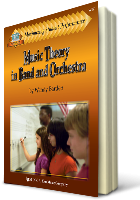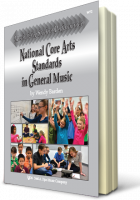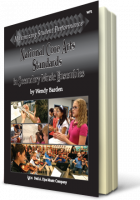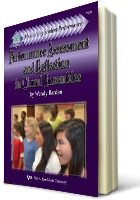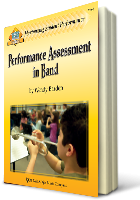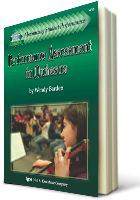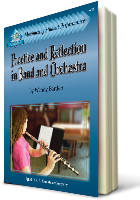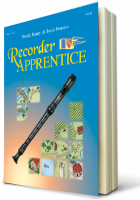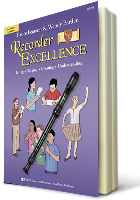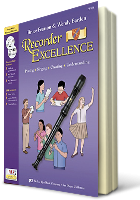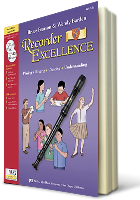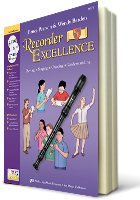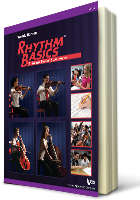"Take Five" to look around your music room
Ask yourself these five questions to make the best use of your space for learning.
1) Is the room arranged to encourage learning? In the elementary music classroom, we think about seating that is comfortable, practical, and helps students establish their own space—chairs, risers or the floor? What seems to work best for your situation? Is it possible for students to focus towards a screen or interactive white board and keep the door out of their direct line of vision? Are you able to create adequate space for movement or stations? If you play a lot of circle games, enlist the advice (and help?) of your custodian to mark a large circle on the floor. (Be aware that some kinds of tape leave marks on flooring. Ugh!)
In non-performance music classrooms with older students, arrange seating to encourage collaboration. Of course, there are times when we want them to work individually, but don’t overlook the effectiveness of students working in pairs or small groups.
In ensemble classes, we are quick to set up the chairs in a traditional arc arrangement. If you have a flat, non-tiered rehearsal space, consider the set up Terry Shade describes in String Basics. Arrange the chairs in vertical rows (“squads”) that are spread as far apart as possible. This makes it easy for you to move among your students and provide the individual assistance they might need. Plus, students will have a better chance of hearing themselves. In a tiered room, you can increase your mobility, too, by keeping an aisle through the center of the ensemble.
Whatever the room arrangement, take time to straighten the room at the end of each rehearsal or lesson so it’s neat and ready for the next class. In 30 seconds or less, students can help by aligning the chairs and stands, and picking up the bits of paper on the floor. In Classroom Management in the Music Room, David Newell reminds us that there is often a strong correlation between the disheveled look of a room and sloppiness in student behaviors and attitudes towards the class.
2) What is posted on the walls (and hanging from the ceiling)? We all recognize that visuals play a very important role in learning. Make the best use of visuals in your classroom by posting ones that support what you are currently working on in lessons and rehearsals. One idea: word walls can be very useful as a quick reference. Make your word wall a work in progress by adding new terms as they are introduced in a song or piece, and removing terms that students can easily explain and apply.
In addition to keeping your visuals current, keep in mind that too many posters—and even amazing bulletin boards—can be distracting. When there are so many interesting things to look at, a student may have a hard time tuning into the music. This may be especially true of special needs students. In her article, “Clean Up Your Act,” Kara Hume suggests reducing the amount of stimuli around the classroom, or displaying items behind the most distractible students so they are out of their field of vision.
Want more than utilitarian visuals? I’ve seen some very interesting, creative and decorative visuals in the hallways outside the music room. These displays can be a great way to spark excitement about music, invite students into your classroom, and share a bit of your personality at the same time.
3) Are materials ready to use? Plan to have everything you need at your fingertips before class starts—papers, books, pencils, the remote. The time it takes to locate and/or distribute items, if too long, can easily slow down a lesson or rehearsal that was going well! We’ve all experienced time-off-task and transitions that have opened the door to unwanted behaviors.
4) Are unused items stored? Make the most of the space in your classroom or music suite by storing away unused items on shelves or in cabinets. Cover open shelves with fabric to get instruments, books, and other items out of sight. Just like too many things on the wall, a classroom with many things stacked up around the room can pull a student’s attention away from instruction.
5) You’re saving that? Would you really put up that old faded poster or re-use the curling bulletin board letters? Are you really going to repair that old speaker or cracked instrument? Most likely… not. Get rid of those things now because the next teacher who moves into that room won’t want them either.
Yes, and… Once you’ve had a few minutes to look around your music room through a different set of eyes, here is a new idea from David Newell. Have several art reproductions to hang in the music room that you change throughout the year. These reproductions can be interesting conversation starters and aesthetically pleasing, but also powerful tools for teaching musical concepts. Can students “see” contemporary sounds in Picasso’s lines, or relate ABA form to the architecture of a Baroque cathedral?
There are many things needing our attention, and reorganizing the music room right now is probably not high on your list. Doing so could increase learning for many students, though, and isn’t that what we’re all about?
Thanks for pausing with me for a few minutes in your busy week. Have a good one!
____________________
Hume, Kara. “Clean Up Your Act! Creating an Organized Classroom Environment for Students on the Spectrum,” Indiana University Bloomington, Indiana Resource Center for Autism. http://www.iidc.indiana.edu/pages/Clean-Up-Your-Act-Creating-an-Organized-Classroom-Environment-for-Students-on-the-Spectrum (accessed August 29, 2015).
K12 Reader: Reading Instruction Resources. “10 Great Word Wall Strategies for Classrooms.” http://www.k12reader.com/10-great-word-wall-strategies-for-classrooms/ (accessed August 29, 2015).
Kendrick. “Twelve Tips for Setting Up An Autism Classroom.” https://kendrik2.wordpress.com/2007/10/10/12-tips-to-setting-up-an-autism-classroom/ (accessed August 29, 2015)
Newell, David. Classroom Management in the Music Room: “Pin-Drop Quiet” Classes and Rehearsals, pp. 142-149. San Diego: Kjos Music Press (2012).
Responsive Classroom, About Responsive Classroom, “Principles and Practices of Responsive Classroom.” https://www.responsiveclassroom.org/principles-and-practices-responsive-classroom (accessed December 4, 2014).
Robert, Gayle. “The Difference is Amazing,” Responsive Classroom, Resources for Educators, https://www.responsiveclassroom.org/article/difference-amazing, Responsive Classroom Newsletter April 2001 (accessed December 4, 2014).
Shade, Terry and Woolstenhulme, Jeremy with Barden, Wendy. String Basics: Steps to Success for String Orchestra, Book 1 Teacher’s Edition, p. 8. San Diego: Kjos Music Press (2010).




